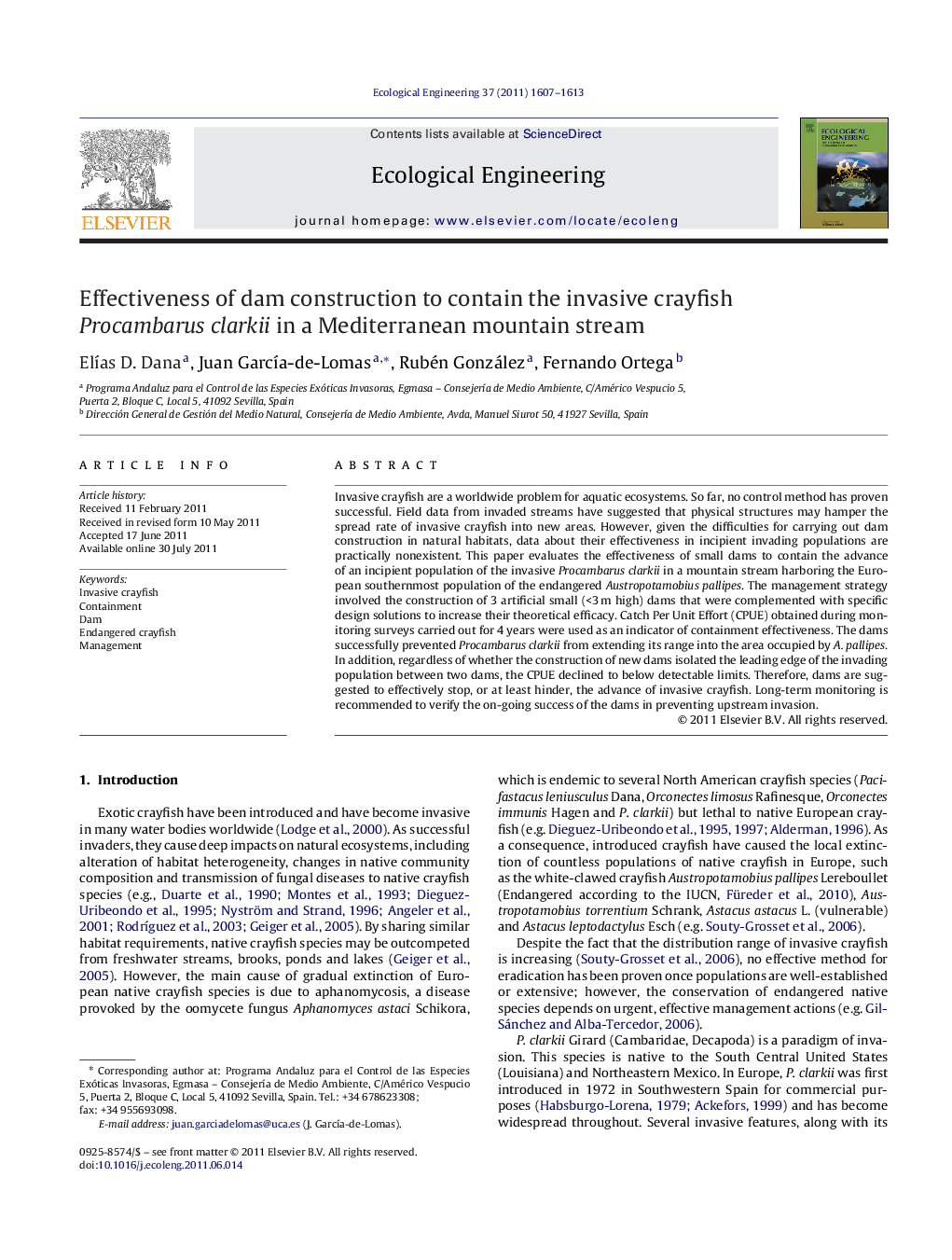| Article ID | Journal | Published Year | Pages | File Type |
|---|---|---|---|---|
| 4390109 | Ecological Engineering | 2011 | 7 Pages |
Invasive crayfish are a worldwide problem for aquatic ecosystems. So far, no control method has proven successful. Field data from invaded streams have suggested that physical structures may hamper the spread rate of invasive crayfish into new areas. However, given the difficulties for carrying out dam construction in natural habitats, data about their effectiveness in incipient invading populations are practically nonexistent. This paper evaluates the effectiveness of small dams to contain the advance of an incipient population of the invasive Procambarus clarkii in a mountain stream harboring the European southernmost population of the endangered Austropotamobius pallipes. The management strategy involved the construction of 3 artificial small (<3 m high) dams that were complemented with specific design solutions to increase their theoretical efficacy. Catch Per Unit Effort (CPUE) obtained during monitoring surveys carried out for 4 years were used as an indicator of containment effectiveness. The dams successfully prevented Procambarus clarkii from extending its range into the area occupied by A. pallipes. In addition, regardless of whether the construction of new dams isolated the leading edge of the invading population between two dams, the CPUE declined to below detectable limits. Therefore, dams are suggested to effectively stop, or at least hinder, the advance of invasive crayfish. Long-term monitoring is recommended to verify the on-going success of the dams in preventing upstream invasion.
